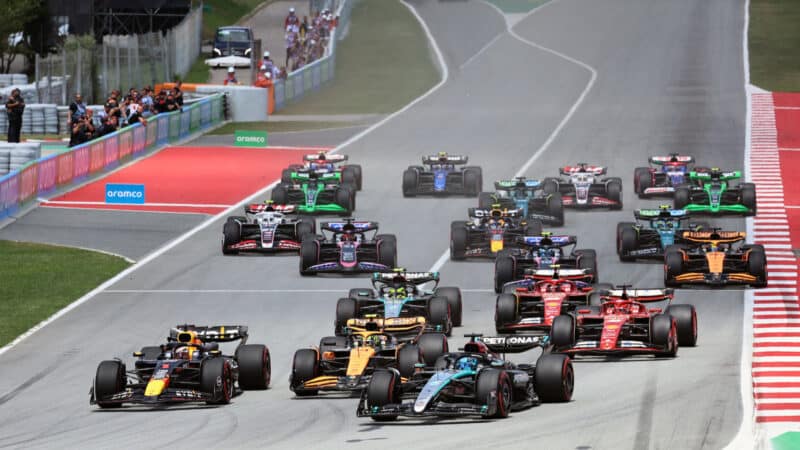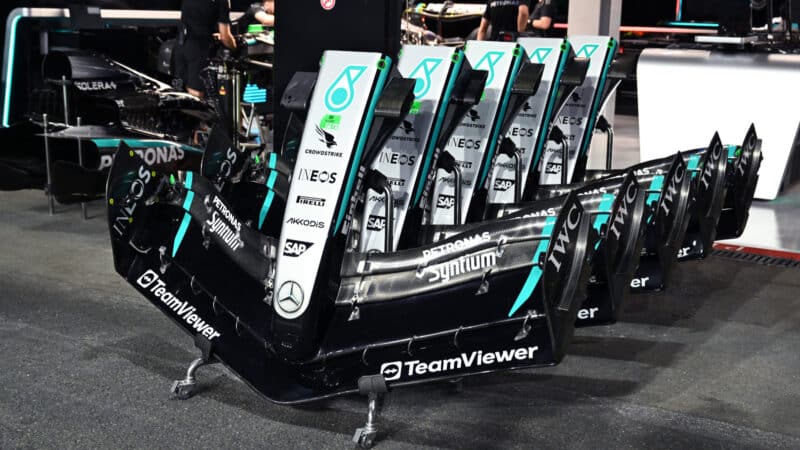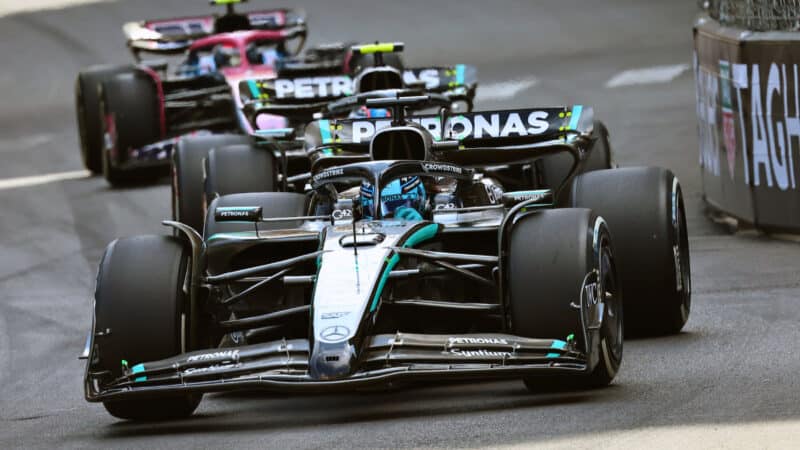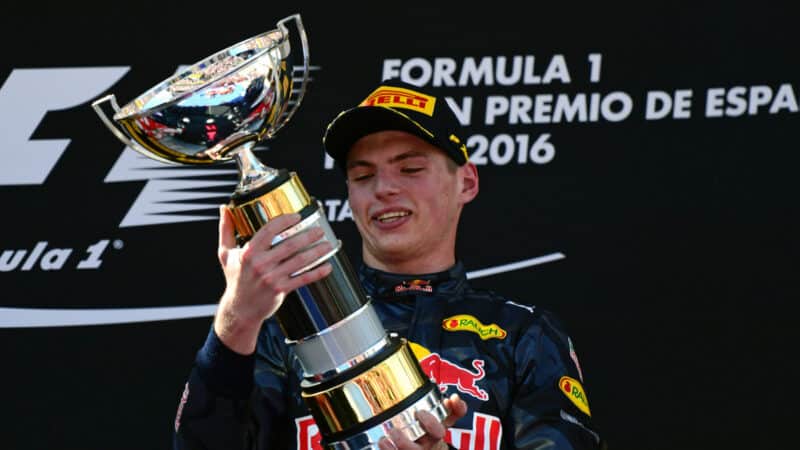Will flexi-wing rule reshuffle F1? - What to look for at the Spanish GP
The Spanish Grand Prix marks the end of F1’s second triple-header in a hectic start to 2025, with new flexi-wing regulations set to potentially disrupt the competitive order ahead of round nine

Barcelona is hosting its final Spanish GP this weekend
Grand Prix Photo
This weekend’s Spanish Grand Prix completes the second triple-header of what has been an intense start to the 2025 Formula 1 season, featuring nine races in 12 weeks.
More intrigue will be served up as new technical rules to clamp down on flexible wings threaten to shake up the order at Barcelona.
We look at the main questions ahead of the next round of the championship.
Will FIA directive make a difference?
The Spanish Grand Prix is the moment some F1 teams have been waiting for, and the event they have been pinning their hopes on to change the outlook of the remaining part of the season.

Which teams will be most affected by the new TD?
Getty Images
Barcelona sees the introduction of tougher standards in front wing tests, reducing the amount that they can flex when under load.
As a front wing bends under load — at high speed — drag reduces, enabling the car to go faster. There have long been suspicions that some teams are cleverly adapting their bodywork so that it passes the required tests (which use weights placed on the wing when the car is at a standstill) but flexes to a greater extent on track.
While all teams have so far complied with the previous regulations, a fact-finding mission set up by the FIA revealed the need for tougher tests, which is why a new technical directive is coming into play.
TD018 is being introduced by the FIA in Barcelona, a rules tweak that will reduce the permitted flex from 15mm to 10mm when weights are placed on either side of the front wing.
The focus on front wing flexibility follows a period of scrutiny, particularly of McLaren, with Ferrari boss Frederic Vasseur suggesting the rule tweaks could be a “game-changer”.
“It could be a reset on the immediate picture, but not on the championship,” Vasseur told Sky earlier this month. “The guy who will lead the championship in Spain will still lead the championship after Spain, but, in terms of pure performance, it could be a game-changer.”
The change means all teams should be bringing a new front wing to Spain, and the fact that it is introduced mid-season, rather than delayed until next year, is reason to think it should have an impact of some kind.
While McLaren has insisted it is not a big deal and that it won’t change anything, the effect of the clampdown is anyone’s guess.
Has Norris turned the corner?
There was little doubt that the Monaco Grand Prix weekend was Lando Norris‘s high point so far in 2025, only comparable to the first race of the year in Australia.

Norris has outscored Piastri in the last two races
Grand Prix Photo
A key pole position followed by a controlled drive under pressure helped him to close the gap to team-mate Oscar Piastri to just three points by the end of the Monte Carlo race.
Having also finished ahead of Piastri in the previous race at Imola, the momentum appears to have switched to Norris, but he will have to confirm it in Spain, where coming out on top against Piastri could mean that he re-takes the championship lead.
But Norris’s Monaco win doesn’t mean he has solved all his problems, according to the driver himself.
“I’ve been working hard over the last few months to get back to having that momentum that I had in Australia, that confidence,” said Norris after the race. “What I felt this weekend was a small step forward, but it’s not it. It’s not like I’ve nailed it now and everything’s back.
“There are still things that I need to work on, there are still things that, as a team — them giving me the equipment — and I don’t mean just making a quicker car, because the car’s quick enough but giving me the things I need from the car in order to excel and maximise results, and the differences from last year to this year.”
So Barcelona will be a good litmus test to find out if Norris has turned a corner and is McLaren’s main man again.
Can Mercedes react?
Mercedes arrives at the Spanish Grand Prix under pressure to fight back after two disappointing weekends at Imola and Monaco which have allowed rivals Ferrari and Red Bull to close right up in the fight for second behind McLaren.

Mercedes left Monaco without points
Grand Prix Photo
Just six points in the Emilia Romagna GP and zero at Monaco have left Mercedes four points ahead of Red Bull and five in front of the Scuderia.
The past two races have been a stark contrast to the first six, in which this year’s car looked like a contender, particularly in the hands of George Russell.
Mercedes is likely to have some upgrades in Barcelona, but it also faces the consequences of the flexi-wing clampdown, as the team is believed to be one of those that could be affected by the regulation change.
While Barcelona has often been a key indicator of team and car performance for the remainder of the season, the technical directive is adding an extra twist that could have a bigger impact on teams like Mercedes.
The end of the second triple-header could also be the moment some teams decide to switch focus to 2026, so the competitive picture in Spain could very well show what the next few months will look like.
Will Spain produce a third winner in a decade?
Unless Max Verstappen or Lewis Hamilton win on Sunday, the Spanish Grand Prix will have a third winner for the first time in a decade.

Verstappen won his first F1 race in Barcelona in 2016
Verstappen has won the race four times: 2016, 2022, 2023 and 2024, while Hamilton has finished on top in 2017, 2018, 2019, 2020 and 2021.
Their dominance of the race over the last 10 years contrasts heavily with the previous decade, in which nine different drivers stood on the top of the podium, Fernando Alonso being the only repeat winner.
Going into the weekend, the odds don’t favour Hamilton, who has been far from the victory fight on Sundays this year.
Verstappen’s chances remain a bit of a mystery as his Red Bull’s form has fluctuated wildly this season. His victory at Imola followed by a fourth-place finish at Monaco is evidence of that.
But as pointed out above, the impact of the introduction of a new technical directive is adding an extra layer of intrigue that may or may not see a change at the head of the field.
Norris started on pole last year and said that messing up the start cost him victory. Following his Monaco win, he is hot favourite to add a third name to the list of Barcelona winners over the past ten years.
What’s next for Barcelona?
This weekend’s race will be, in theory, the final Spanish Grand Prix hosted by the Circuit Barcelona-Catalunya after F1 signed a long-term deal to move the event to Madrid from 2026.

Will Barcelona stay on the calendar beyond 2026?
Grand Prix Photo
Barcelona, however, also has a contract with F1 for next year, meaning the event is scheduled to take place, but under a different name.
The Catalan circuit’s future as part of the F1 calendar remains up in the air and, despite Madrid’s contract, it hasn’t given up on securing an extension beyond next season.
Barcelona has met the demands that F1 made to maximise its chances of remaining on the calendar, including new buildings and sustainability initiatives.
But the F1 schedule is at maximum capacity and the odds of one single country that isn’t the US hosting more than one race per year are rather low.
Which is why Barcelona might need to accept to be part of the rotating calendar if it wants to stay around post-2026.
